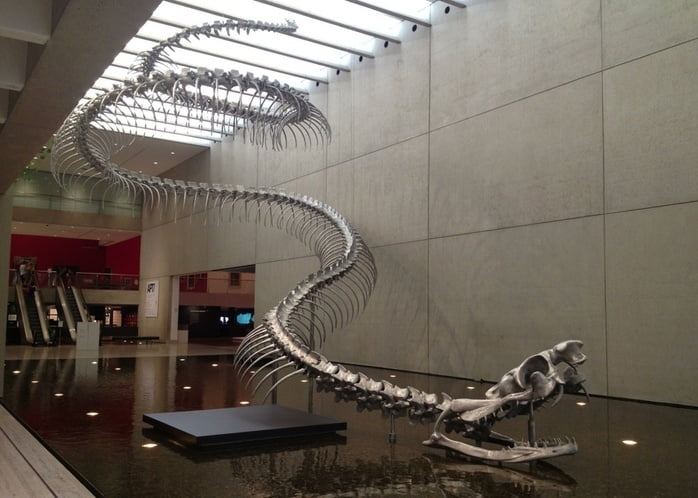A photograph has been circulated on social networks that allegedly shows the skeleton of a huge prehistoric reptile. We have verified the authenticity of this photo.
The image was repeatedly published by popular public pages on VKontakte with hundreds of thousands and even millions of subscribers: "5 interesting facts", "Book of Records", "This is interesting!", "Anatomy for doctors - medicine", "That's kind of biology" and many others. Users also shared a photo with similar captions Facebook, Twitter, Instagram and other social networks.
A giant prehistoric snake really existed - in 2009, its fossils were revealed discovered in Colombia an international group of researchers. They estimate that the reptile lived about 60 million years ago, reached 13 m in length (about twice as long as an anaconda) and weighed more than a ton. The fossilized remains of 28 of these snakes, closely related to the boa constrictor genus (Boa), were discovered in a mine in the municipality of Cerrejon, so the species was named Titanoboa cerrejonensis.
The find quickly became popular outside the scientific community. In 2012, Smithsonian Channel released documentary Titanoboa: Monster Snake, dedicated to the largest snake in history. Then at the National Museum of Natural History in Washington appeared reconstruction of Titanoboa.

However, the photograph of the skeleton, which regularly appears on social networks under the guise of a Titanoboa skeleton, has nothing to do with the giant ancient reptile. The photo shows the Ressort sculpture, created in 2012 by artist Huang Yong Ping. The work, housed at the Queensland Art Gallery in Australia, is made of aluminum and stainless steel. Ressort is part of a series of large sculptures depicting snakes and dragons - important symbols in the culture of China, where the artist is from.
Not true
- Snopes. Is This a Titanoboa Monster Snake Skeleton?
- Queensland Art Gallery. Resort
If you find a spelling or grammatical error, please let us know by highlighting the error text and clicking Ctrl+Enter.






